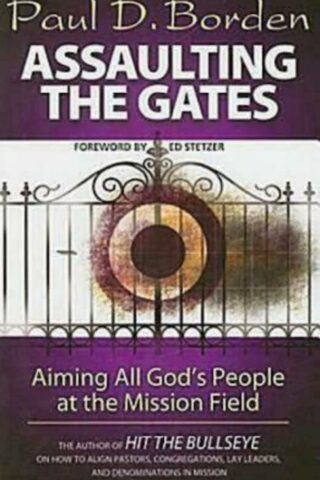Paul Borden
Showing all 2 resultsSorted by latest
-
Make Or Break Your Church In 365 Days
$24.99The joy of ministry is lost in the terror of being ill equipped for daily tasks. This book leads the way, providing clear plans for the daily tasks of effectively leading a congregation. Make or Break Your Church in 365 Days helps pastors develop competency in the daily task of leading congregations by answering two fundamental questions: * What must be done in the first 365 days of a pastor’s tenure? * What is the optimal way to structure a daily work life to affect change in the first year and beyond? These very specific tasks are the behaviors that demonstrate competency and lead to growing, effective churches.
Add to cartin stock within 3-5 days of online purchase
-
Assaulting The Gates
$22.99Many churches want to make the transition from an inward to an outward focus, from catering to the needs of members to reaching out into the world to make disciples of Jesus Christ. Too often they try to accomplish this radical change by taking half steps and partial measures, initiating a new program here or adding a new staff members there.
Yet this kind of change requires more. To succeed in changing its core focus this way, a congregation must learn strategic thinking; it must commit itself to seeing the big picture, and to taking the steps necessary to paint that picture afresh. Everyone, including pastors, lay leaders, key teams and groups, and the congregation as a whole must be involved in a process of transformation. Paul D. Borden, author of Hit the Bullseye and Direct Hit, knows that this transformation will not be easy. But if the target is bringing more people into saving relationship with Jesus Christ, what could be more worthwhile?
Add to cartin stock within 3-5 days of online purchase












